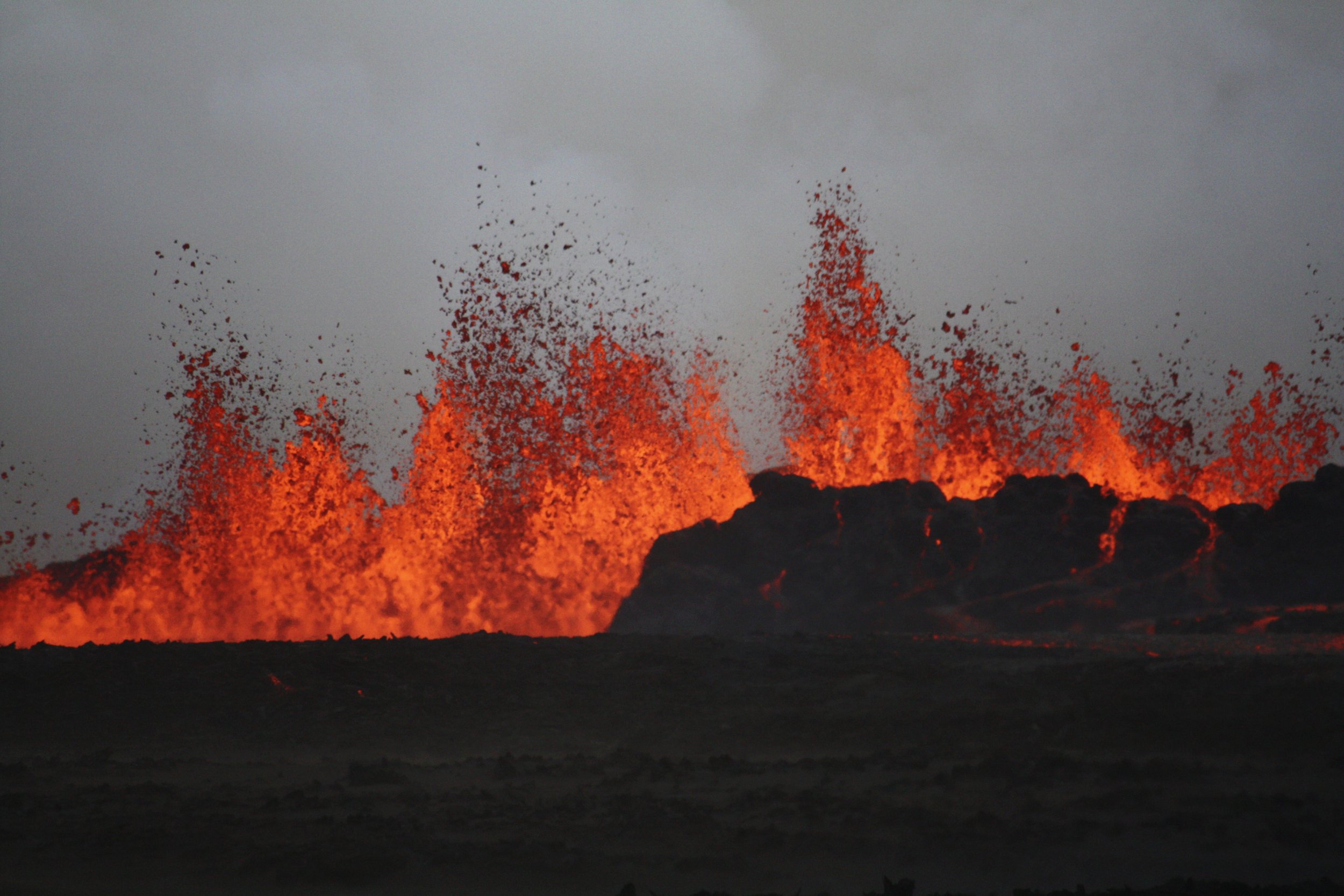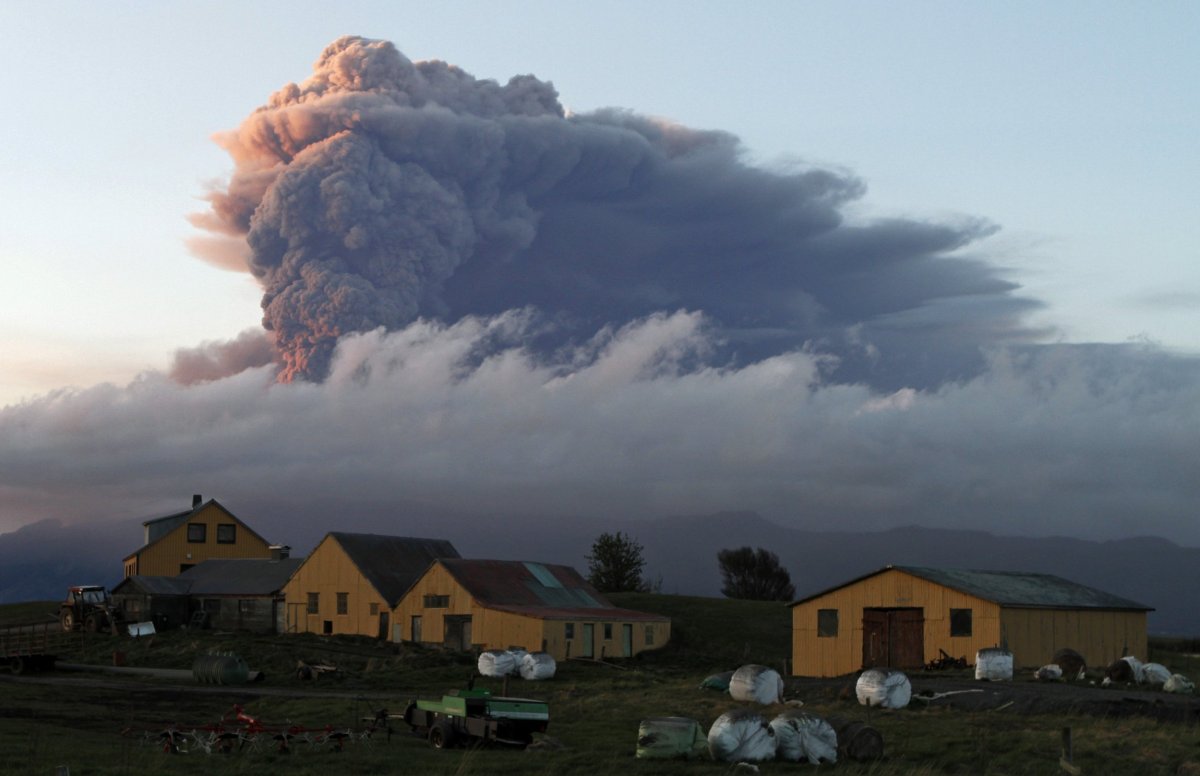
Iceland's volcanoes coated in glaciers could start erupting more often in the distant future—thanks to climate change, according to a study published last month.
The study, published in Geology, investigated a historical period of volcanic activity. Volcanic ash preserved in peat deposits and lake sediments revealed that less volcanic activity 5,000 years ago coincided with cooler global temperatures. As the climate changed, glaciers may have influenced how rifts in continental plates interacted with the buildup of pressure from gas and magma inside the volcanoes.
Several mechanisms are at play in how this aboveground change shapes volcanic activity underground.
The thickness of the ice is one factor, according to Ben Edwards, earth sciences professor at Dickinson College, who wasn't involved with the November study. Ice in Iceland is much thinner than that in Greenland and Antarctica, Edwards explains. Melting glaciers in Iceland could have an effect on volcanic activity, as suspected in the Geology study. But, because the thickness of Iceland's ice isn't as substantial, the pressure released from the glaciers melting could also be less substantial than such melting would be elsewhere.
Melting glaciers could also affect both the source region at the bottom of a volcano, which lies deep underground, and the magma chamber, which is closer to Earth's surface. The melting reduces the pressure exerted on the volcano by the glaciers. "As the ice gets thinner ... they're exerting less pressure," Edwards said.
Though it's unclear how much melting glaciers change pressure on volcanic systems, it likely changes at least in part. "If you have pressure on something, when you release the pressure, the system changes," he told Newsweek.
Edwards likened volcanoes to a soda bottle. "There are places between the bottom and the nozzle where you can have liquid stored for a while," Edwards said.

How close to the surface the magma is stored shapes how glacial pressure would affect volcanic activity. Magma stored five kilometers deep will be affected differently by changes above ground compared to magma stored at 50 kilometers. The magma closer to the surface is probably more sensitive to "smaller changes in ice," said Edwards.
And how quickly glaciers melt could also affect eruptions of volcanoes with magma stored at shallow levels. Think of the cap of a shaken soda bottle opened quickly versus slowly. "If you change the pressure really rapidly, like you open the lid of the bottle really fast, or even if you just open it part ways to release some of the pressure, you can still get some stuff that squirts out because you're allowing the gas to expand," he said.

Volcanic systems vary around the world, according to Edwards. That means what scientists discover about one area of volcanoes doesn't necessarily apply to the rest of the world. Iceland, too, has a particularly unique volcanic system because its magma comes from two sources. Comparing Iceland's volcanoes—and their possible impending wake-up call from climate change—to the rest of the world's volcanoes doesn't work well.
But is it like comparing apples and oranges? "I would not quite say apples and oranges," he said. "I might say varieties of apples."
Uncommon Knowledge
Newsweek is committed to challenging conventional wisdom and finding connections in the search for common ground.
Newsweek is committed to challenging conventional wisdom and finding connections in the search for common ground.
About the writer
Sydney Pereira is a science writer, focusing on the environment and climate. You can reach her at s.pereira@newsweekgroup.com.
To read how Newsweek uses AI as a newsroom tool, Click here.








